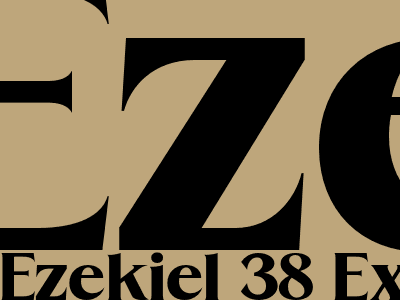Ezekiel 38 Explained: Unraveling the Prophetic Mystery
A Comprehensive Examination of the End-Times Prophecy
The Book of Ezekiel, a profound and enigmatic text, contains a compelling prophecy in Chapter 38 that has sparked interest and speculation for centuries. This enigmatic passage, known as the "Gog and Magog" prophecy, offers tantalizing insights into the future and the end times according to biblical tradition.
The Identity of Gog and Magog
Central to the prophecy is the enigmatic figure of "Gog," described as "the ruler of Meshech and Tubal," two ancient nations associated with the Caucasus region. Scholars believe Gog may represent a coalition of nations or a powerful individual who will lead an invasion against Israel in the latter days.
Equally intriguing is the term "Magog," which some interpret as a reference to a Scythian tribe or a symbol of a vast and diverse army. The prophecy portrays Magog as a formidable force that accompanies Gog in this impending invasion.
The Invasion of Israel
According to Ezekiel 38, Gog and Magog will assemble a mighty army and march against Israel from the north. The prophecy vividly describes their invasion as a "cloud covering the land" and their intentions as "to plunder and take spoil." This invasion, it is believed, will occur in the context of Israel's restoration and prosperity in the end times.
The prophecy goes on to describe God's intervention on behalf of Israel. Through divine judgment, God will intervene and inflict severe punishment upon the invading forces, ultimately leading to their defeat and destruction.
The Eschatological Significance
The "Gog and Magog" prophecy holds immense eschatological significance in biblical tradition. It is widely interpreted as a symbolic representation of the final battle between good and evil, a conflict that will usher in the establishment of God's eternal kingdom.
The prophecy suggests that, despite the formidable opposition and challenges that Israel will face in the end times, God will ultimately triumph and establish His sovereignty over all nations.
Historical and Archaeological Evidence
While the "Gog and Magog" prophecy is primarily a theological text, some scholars have sought to identify historical and archaeological evidence that may shed light on its fulfillment.
In the Caucasus region, archaeological evidence suggests that the ancient nations of Meshech and Tubal were indeed significant powers during the seventh and eighth centuries BCE, the time period in which Ezekiel prophesied. This lends credence to the historical backdrop of the prophecy.
Conclusion
The "Gog and Magog" prophecy in Ezekiel 38 is a complex and multifaceted text that has captivated the imaginations of scholars and believers for centuries. It offers a glimpse into the end-times according to biblical tradition, foreshadowing a conflict between good and evil and the ultimate triumph of God.
While its precise fulfillment remains a matter of speculation and debate, the prophecy serves as a reminder of God's sovereignty and His unwavering commitment to His people, Israel.

Comments